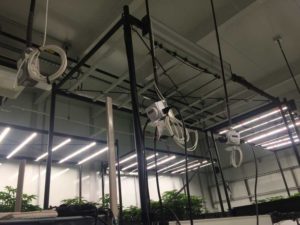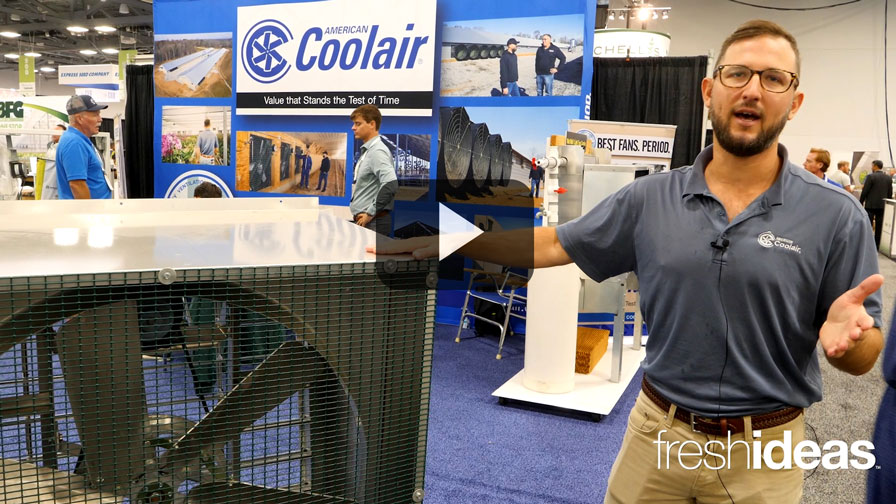What to Consider When Upgrading Your Environmental Control System

While some parts from the existing system may be perfectly good and be able to be reused, exercise caution on using older parts and cables. These can make the system vulnerable to interruptions and failures even with a completely new control system.
Note: This article is the third in a series in which Greenhouse Grower and L.L. Klink Greenhouse Solutions (a national sales and service greenhouse provider) are partnering to provide you with information on how to most efficiently manage your greenhouse. Check out the first two articles in the series here.
After several years of optimal performance, many greenhouse growers find their environmental control systems becoming less reliable, and replacement parts more difficult to find. Sometimes legacy systems are no longer supported by the manufacturer, leaving growers in a bind. In these cases, growers may find that an environmental control system upgrade or replacement is a necessary and worthwhile investment.
Technology advances gradually make control systems obsolete. Most environmental control systems will last 10 to 15 years; however, growers may want to plan for minor upgrades to software/firmware and sensors in the five- to 10-year time frame.
While there are systems running perfectly at 20 years or more, these systems are at risk for higher failure rates. Coupled with the advanced age of these control system is the limited availability and high cost for replacement parts. A control system failure can become mission critical in short order. Savvy growers will plan for a controls upgrade or replacement as part of their strategic, long-term outlook and not wait for eminent failure.
Whether or not growers with an older system are experiencing reliability issues, they may be having problems purchasing parts and getting tech support for their legacy system. In some cases, the control system may be past the point for an upgrade, and it will be necessary to replace it.
Upgrade/Replacement Benefits
There are several potential benefits to being proactive in upgrading your environmental controls system:
• Improved labor efficiency
• Reduced energy consumption
• Improved reliability
• Improved crop quality and yield
• Opportunity to expand and add more equipment and sensors
• Opportunity to modify with dimmable lights or variable speed fans, which can save energy while optimizing crop requirements
• Newer control systems often boast a suite of features to make management easier, such as text or email alerts
• If you are not happy with your current controls system company or they don’t offer the features you want, this may also be the time to change.
Upgrade Versus Replacement Considerations
Staying with a company and control system you know has the advantage of being familiar, even if it’s not everything you want. While it’s often believed to be the least expensive choice, do your homework, as you may be surprised to find comparably priced systems with more features from other manufacturers.
If you haven’t already, consider upgrading your current system’s software and firmware. Upgrades to sensors and control hardware with the latest version of products can be much less expensive and should operate nearly as well as a new system.
For those with legacy systems, the only choice may be to replace the control system. If you have had a great experience with your current control system company, then by all means this will be your first call. If you have not had a great experience or you are looking for a system with more features, then plan time to explore what is available on the market. Controls are a significant investment and worthy of investing time to make sure the choice is right for your facility.
A Roadmap for Upgrading or Replacing Your Environmental Control System
1. Determine your current environmental control system needs. Do you want an integrated system with monitoring, controls, and alarms under one umbrella? What features are most important to you and will bring the best return on investment?
2. Establish a budget that meets your needs.
3. Plan for future control system needs. Whether you are planning an expansion or adding new equipment, consider how easily the control system can grow with you.
4. Inspect electrical grounding and protection systems. Poor grounding, site-specific issues, or a fundamental design problem with your existing controls could be a source of failures.
5. Explore environmental control system companies and their products to find the best fit.
More Considerations
Consider engaging a greenhouse design/consulting firm to assist in identifying your short- and long-term needs/direction, matching them to the right solution and ensure proper execution.
Quotes for environmental control replacements often do not include the costs for installation and commissioning. Consider hiring an installer with greenhouse environmental controls experience, especially for large or complex control systems. These highly skilled professionals are well worth the cost, as they can often complete the installation with precision in less time, and will warranty their work.
While some parts from the existing system may be perfectly good and be able to be reused, exercise caution on using older parts and cables. These can make the system vulnerable to interruptions and failures even with a completely new control system.
Whether your facility is large with multiple zones spread across acres or a small operation with just one or two zones, there are a wide range of environmental control systems on the market to meet your needs. Larger and more complex facilities will likely find cost advantages in integrated control systems with a range of features.
Finally, if you are wondering what to look for in an environmental controls company, here are some questions to ask when researching companies and their products.
• Does the company have experience with greenhouse environmental controls?
• Does the company have a staff of experts and offer tech support? If so, what is their availability?
• Is the company knowledgeable about horticulture and greenhouse production?
• Is the company knowledgeable about greenhouse equipment and operation?
• What is the company’s customer support track record?
• Do they offer reliable products and back them up with a warranty?
Don’t be shy about asking for references and allow time to research each company and their products’ capabilities.








